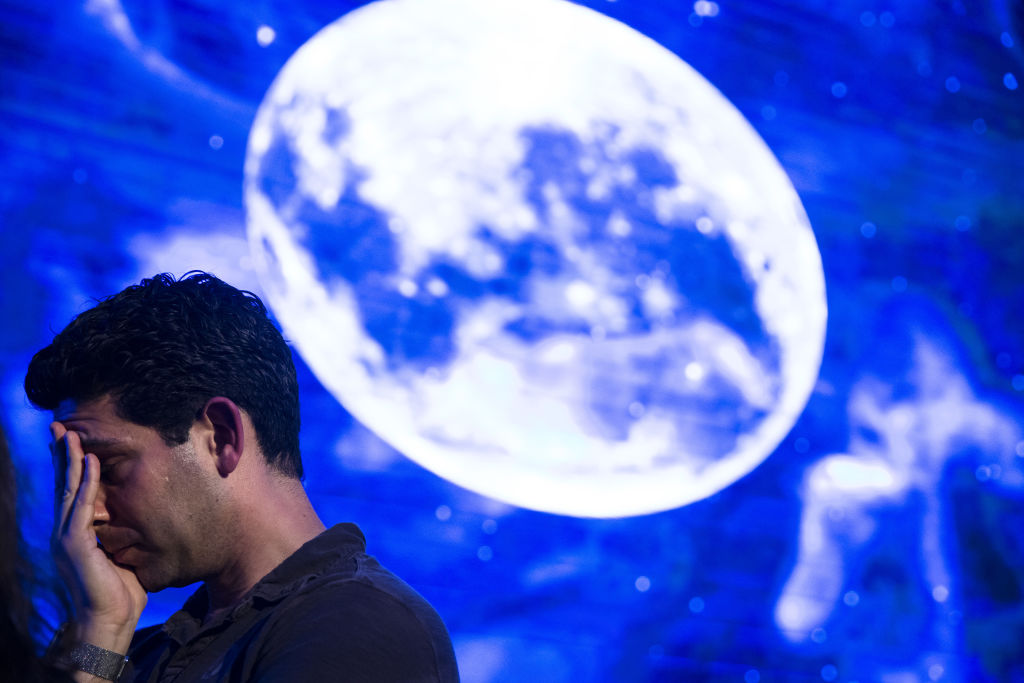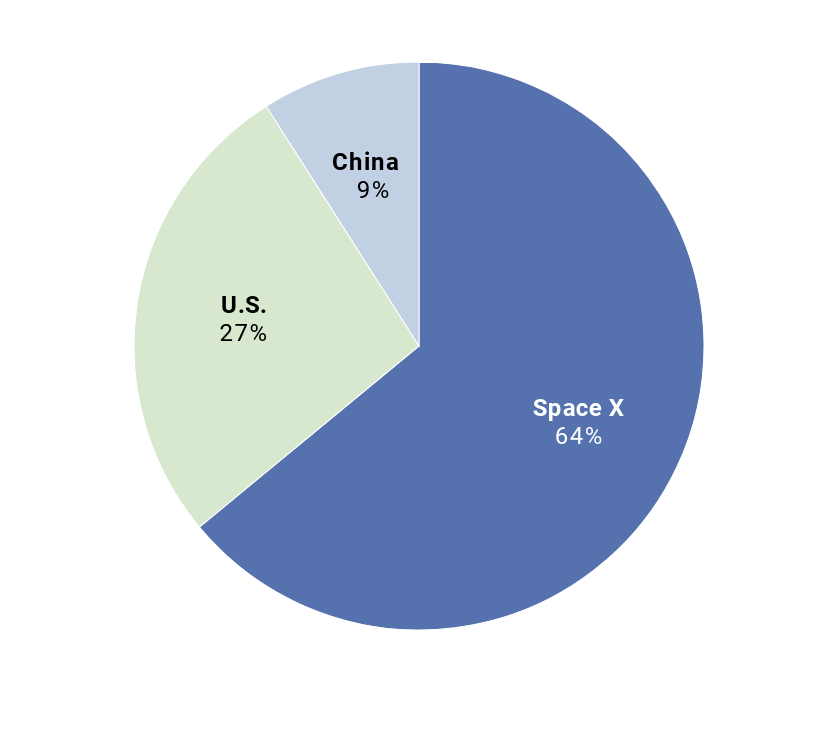
A version of this first appeared as the TIME Space newsletter sent on Aug. 10.
There are now bears on the moon.
No, really. They’re tiny bears—barely half a millimeter in length—but they’re there. And oh yeah, they may be alive. The bears in question are actually tardigrades—a little like worms, a little like insects, with a fat, segmented body, and eight legs ending in tiny claws. Discovered in 1773 by a German zoologist who nicknamed them kleiner Wasserbär, or “little water bear,” they are found pretty much everywhere on Earth because they can live pretty much anywhere. They’re able to survive temperatures as low as -200°C (-328°F) and as high as 150°C (about 300°F). They shrug off radiation that would kill just about any other animal and can survive for years—perhaps decades—without water, shriveling into a dry, organic fleck, and able to live anew once they’re rehydrated.
In February, when Israel’s Beresheet spacecraft was launched to the moon, it carried not only scientific instruments, but a digital library of 30 million pages of information, samples of human DNA and a colony of thousands of tardigrades. Beresheet didn’t quite make it, crashing on the moon on April 11. But the spacecraft’s designers last week announced that they believe the library, the DNA, and the tardigrades may have survived.
The temperature on the moon vacillates from paralyzingly cold to sizzlingly hot, but remains within the tardigrades’ 350-degree-Celsius range; there’s no water, but the tardigrades don’t care; there’s no air, but when they enter their suspended animation state they’re not breathing anyway. Under the right circumstances they might well live again.
That, actually, is not entirely a good thing. The U.S. is a signatory to the 1967 Treaty on Principles Governing the Activities of States in the Exploration and Use of Outer Space, Including the Moon and Other Celestial Bodies (known colloquially—and mercifully—as The Outer Space Treaty). Article IX of the treaty specifically mandates that space-faring nations shall “conduct exploration of [other worlds] so as to avoid their harmful contamination.” NASA has even established an Office of Planetary Protection to ensure that that standard is met, building spacecraft in sterile environments and decontaminating them before launch to the greatest extent possible.
That doesn’t mean organisms couldn’t hitch rides into space anyway. When the Apollo 12 astronauts returned from the moon in 1969, they brought with them the camera from the Surveyor 3 spacecraft that had touched down on the moon two and a half years earlier. On inspection back on Earth, the camera was found to be harboring a living colony of Streptococcus bacteria that, scientists believed, had somehow survived the lunar environment all that time. It hadn’t: the camera was actually contaminated by the scientists themselves after its return, but it was a reminder of the bacterial risks.
All the same, the Apollo 12 astronauts themselves left no end of their own microorganisms on the moon, organic traces clinging to instruments and other equipment they had handled inside their spacecraft and then discarded on the surface. And, of course, there’s all the human waste—moon poop—they and the other five landing crews left behind.
The bacteria and other organisms in all that litter have likely long ago died. The tardigrades, inert for now, may have stories still to tell.
PHOTO OF THE WEEK

Lightsaber in Space: It’s not really, and if it were, the particular saber in question, captured in an image by the Spitzer Space Telescope, would be one measuring 60,000 light years across. What the picture actually reveals is NGC 5866, a galaxy truly far, far away—it lies 44 million light years from Earth—viewed on edge. Its red hue is a result of starlight shining through galactic dust.
WHAT WE’RE READING
Musk Versus Bezos
It’s tough to make people care about the quarrels of billionaires. If David Koch gets into a scrap with Sergey Brin, so what? But Elon Musk and Jeff Bezos are another matter. The founders of SpaceX and Blue Origin respectively, the two are the acknowledged leaders of the new era of entrepreneurial space travel. Musk, by a great many measures, is far in the lead—having established his company as a reliable commercial launch service, and preparing to launch astronauts to the International Space Station sometime in 2020. But Blue Origin leads SpaceX in another very important metric: money. Head of a little operation known as Amazon, Bezos has pledged to spend as much as $1 billion of his own wealth per year to fund his space dreams, and as Quartz reports, he just sold nearly $3 billion of Amazon stock, the proceeds of which, most people believe, are going straight to space. As America’s Original Seven astronauts use to say: “No bucks, no Buck Rogers.”
Fire in the Hole
NASA is hardly a bystander in the Musk-Bezos race, and remains committed to its 2024 return-to-the-moon deadline. Even if Bezos provides NASA with a lunar lander, which the company is now developing, NASA has to build both the rocket—the Space Launch System—and the Orion mother ship and orbiter. Every good moon ship needs its own powerful on-board engine and last week, the space agency conducted a critical hot-fire test of its latest engine at the White Sands Test Facility in New Mexico, and released a dramatic image of the system at work. The moon awaits; the engine looks ready.
Lovin’ Some Area 51
Face it, you hope there are aliens at Area 51, the mysterious U.S. Air Force base in the Nevada desert that’s said to be the site of unexplained doings involving extraterrestrials that crash-landed there in 1947. The (mostly) satirical Facebook page “Storm Area 51” (slogan: “Let’s see them aliens”) has pumped fresh life into the seven-decades-old rumors, calling for a citizens’ invasion of the site on September 20. The idea of aliens in Nevada is, of course, only one of America’s seemingly boundless supply of conspiracy theories, including the ones involving vaccines (they’re dangerous!), the moon landings, (they were faked!), and President Obama’s birthplace (not here!). But Area 51 has a stickiness to it that will likely keep it around long after the others have vanished. TIME looked at what psychologists have to say about the appeal of the story, and why we may never give it up.
Hell in Space
Even on Earth’s worst days, our home planet can still look in the mirror and think, “At least I’m not Venus.” The two worlds started out more or less the same—nearly identical in size, with similar atmospheres, both snuggled inside the sun’s cozy habitable zone, where water can exist in a liquid state. But while Earth became a garden, Venus became an oven. Space.com offers a terrific explainer—How Venus Turned to Hell—walking you through everything that went wrong on our sister world to make it the mess it is today. But if you’re inclined to gloat, don’t. The remainder of the story’s headline is, “And How the Earth is Next.”
Happy Birthday—on Mars
Barack Obama was in the White House, “Call Me Maybe” was on the radio, and Jon Stewart was interviewing Project Runway’s Tim Gunn on The Daily Show. That was Aug. 6, 2012, the day NASA’s Curiosity rover landed on Mars. Just past its seventh Martian birthday, Curiosity is still at work, having driven a total of 21 km (13 miles) and climbed to a maximum elevation of 368 meters (1,207 ft.)—doing science all the while. NASA has a look at what the rover is up to at the moment, as it hunts for signs of conditions that might once have supported life in the now-dry lakebed it is exploring.
YOUR BET ON THE RACE TO MARS
Last week, we asked you who you think will be the first to land on Mars. Here’s what you said:

THANKS FOR READING
TIME Space is written by Jeffrey Kluger, Editor at Large at TIME magazine, and the author of 10 books, including Apollo 13, Apollo 8 and two novels for young adults. Follow him at @jeffreykluger.
We welcome any feedback at space@time.com.
Correction: The original newsletter email subject line, due to an editing error, stated that there were bears on Mars. The bears are on the moon, not Mars. We regret the error.
More Must-Reads from TIME
- Cybersecurity Experts Are Sounding the Alarm on DOGE
- Meet the 2025 Women of the Year
- The Harsh Truth About Disability Inclusion
- Why Do More Young Adults Have Cancer?
- Colman Domingo Leads With Radical Love
- How to Get Better at Doing Things Alone
- Michelle Zauner Stares Down the Darkness
Write to Jeffrey Kluger at jeffrey.kluger@time.com